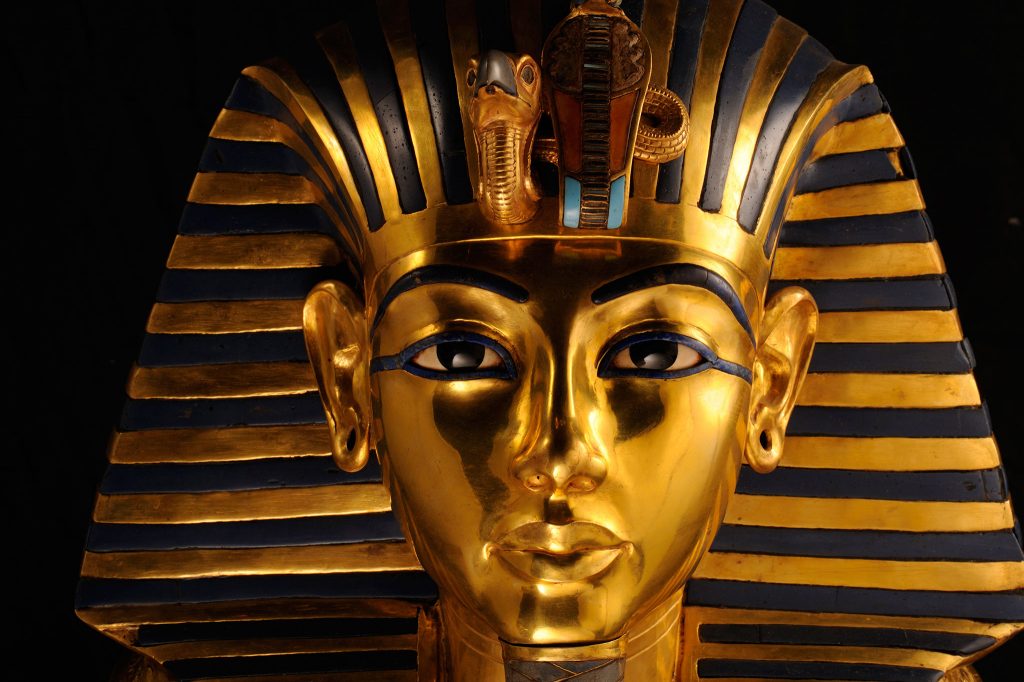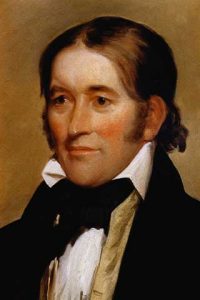Thanks to modern technology, the examination and research into mummified bodies and artifacts from ancient Egypt have answered many questions for scientists and historians alike. What was the culture of these ancient people? Who were their leaders? And what was the process and purpose of mummification? In the twentieth century, the tomb of King Tutankhamen was discovered, and that discovery has answered many of these questions. Thanks to the discoveries of the Ancient Egyptian’s burials of their kings, particularly that of King Tutankhamen, we have learned more and more about the Ancient Egyptian’s history and traditions when it comes to laying the dead to rest.

Scientists and archaeologists say that King Tutankhamen became king at the very young age of nine. However, he may have been no more than a puppet ruler, and the true power behind the throne was said to belong to a man who may have been related to Tut named Ay. Young Tut was a physically frail youth. Through the examination of his body, scientists have found malformations in his feet, and they suspect that the young man had walked with a cane.1 Though he was depicted as fighting in battles and slaying enemies in drawings on the walls of his tomb, there is no actual evidence that this young man participated in any actual battles. However, scholars believe that these depictions merely represent an extension of Tut’s power. It was believed that he married his half-sister, Anthesenpaaton, who was also very young. Though the two had not produced any known heirs, the bodies of two babies were found buried in Tut’s tomb. Archaeologists believe these babies may have been the children of young Tut and his queen.2 He reigned during a period of time known as the New Kingdom. At the young age of eighteen, Tut’s short life and reign over Ancient Egypt had come to an end. The exact cause of Tut’s death remains a mystery; however, scientists believe it may be connected with an infection spread by a broken leg.3
In 1922, the tomb of King Tut was discovered. This finding helped give archaeologists an understanding of the wealth of Egyptian civilization, especially for those living in the upper class. The value of the gold and treasure found in King Tut’s tomb, as was the case for treasures found in other areas of ancient Egypt, surpass that of many others discovered from ancient times. It also has given scientists and researchers much insight into the history, tradition, and science behind the process and purpose of mummification.4
Scholars have discovered that mummifying bodies was tied to the ancient Egyptians’ belief about the afterlife. Egyptians believed that the body was not just a corpse after death, but a resting place for the soul. Osiris, the god of the resurrection and a very respected god to the Egyptians, would judge the soul of the dead.5 Because the Egyptians believed the soul would move on, King Tut’s final resting place was filled with tools and items that the King might need in the afterlife. It contained artifacts such as clothing, musical instruments, jewelry, lamps, chairs, and baskets with food and wine. In addition to the tomb itself, much has been discovered from bodies that were laid to rest so many years ago, including the body of King Tut. The success of the preservation can be accredited to the detail that the ancient Egyptians provided during the process of mummification. Through many years of research and observation, scientists and archaeologists have found that this important practice evolved over time, but it has followed the same basic instructions and procedures.6 After his death, all of Tut’s organs were removed from the body, except the heart, and placed into containers called Canopic Jars. Afterwards, Tut’s body was then covered in a mixture called natron, which consisted of salts that helped inhibit bacterial activity and dehydrate the body. After a little over a month, the mixture of salts was removed from Tut’s body and his cavities were filled with cloth containing resin to give the corpse its shape back. Only after this was the body wrapped with linen, giving it the classic “mummy” appearance. Tut was then placed in a solid gold coffin, and the coffin was then placed in his tomb.7
Traditionally, it was only emperors, kings, and members of the upper class who were mummified, but as time progressed it became a tradition for many members of this ancient society.8
However, because Tut was a king, his resting place was filled with ancient artifacts and treasures in addition to his mummified corpse. Although his reign, and his life, were cut very short, the ancient Egyptians left more than a final resting place for the boy King’s soul when they laid him to rest: they left us, the people of the 21st century, with answers.
- Phillip A. Mackowiak, Diagnosing Giants:Solving the Medical Mysteries of Thirteen Patients Who Changed the World (Oxford: Oxford University Press, 2013), 3. ↵
- Salem Press Biographical Encyclopedia, January 2015, s.v. “Tutankhamen,” by Donald C. Simmons. ↵
- Salem Press Biographical Encyclopedia, January 2015, s.v. “Tutankhamen,” by Donald C. Simmons. ↵
- G. Elliot Smith, Tutankhamen and the Discovery of His Tomb (Routledge: Hoboken, 2013), 1. ↵
- E. A. Wallis Budge, Egyptian Religion : Egyptian Ideas of the Future Life, Routledge Revival (London: Rutledge, 2013), 41. ↵
- Salem Press Encyclopedia of Science, January 2015, s.v. “Mummification,” by James L. Robinson ↵
- Salem Press Biographical Encyclopedia, January 2015, s.v. “Tutankhamen,” by Donald C. Simmons. ↵
- George Hart, Ancient Egypt (New York: DK Publication, 2008), 1. ↵



87 comments
Luis Magana
Mummies and ancient Egypt has always caught my attention so I love reading these articles. I think its so interesting how people shape their whole lives around their religion and beliefs. I never imagined how difficult the mummification process was. Its really amazing how they put so much effort in order to properly burry someone in order to reach their full potential in the afterlife. I really liked the images of the article and enjoyed reading it.
Raymond Munoz
Honestly, I am not very passionate at all about science and very often get frustrated with the concepts. Though, I do find it interesting how people use science to say, or make educated guesses on, what happened to people of the ancient worlds. For example, the article talks about how scientists studied the body of the Tutankhamun and based off their research they are assuming that the young king walked with a cane. For me not being all that interested in science I found this article surprisingly interesting and worth reading.
Mia Stahl
It is incredible that we, in the modern age, have the opportunity to study and understand the sacred practices of such a prominent ancient people. It baffles many that the ancient Egyptians had such intricate and scientifically accurate practices. I believe it is argued that they were some of the most technologically advanced people of the ancient world. So, being able to hear step by step the mummification process that is known so well around the world is awe-inspiring.
Micaela Cruz
The story of King Tut is something I’ve always found interesting, and I gained more knowledge about him from reading this article. I had never knew nor learned that his organs, with the exception of his heart, had been removed and placed into a specific kind of jar… I wonder whatever happened to those jars. I enjoyed how informative this article was and how it gave a deeper insight to the process of wrapping a mummy.
Pamela Callahan
I’ve always found the burial rituals of the ancient Egyptians to be very interesting. I wonder how they came up with these extensive burial processes and how they developed their beliefs about the afterlife. It’s almost unbelievable that the mummified bodies were able to have been preserved for so long. Obviously, the ancient Egyptians must have known a lot about the human body in order to be able to practice this process on King Tut and the others that were mummified.
Daniela Duran
This was a truly interesting article to read. I have always been fascinated by the idea of archeologists finding clues about how people lived in the ancient world. I am impressed by how much effort the Egyptians placed in to the mummification of King Tut, and I am certainly overwhelmed by how they took out all of his organs, to then fill his body with a different material. It is hard for me to understand how our ancestors knew that doing all of this would help in preserving their bodies for so long!!!
It is simply astonishing. I also enjoyed the images of this article! the one with Tut’s corpse is fascinating.
Ysenia Rodriguez
This was a good and very informative article about the mummification process in Ancient Egypt. It’s amazing what religion and beliefs will make people do. The mummification process seems to take quite a while to complete however I am sure the elites were not doing much work such as building the tombs and pyramids. Nonetheless I believe this process is fascinating yet a bit morbid considering how King Tutankhamun was only a child when he was thrusted into power and married off, then died young at the age of 18.
Alexander Manibusan
The idea of burying the dead has been present for a good portion in history. But what I really wonder is how did the Egyptians develop their beliefs for burying the dad and the afterlife. It would be very interesting to see how the process of mummification developed. Also did King Tut do anything significant? I don’t recall him making any significance in history.
Belene Cuellar
I find the whole mummification process really interesting and the fact that Egyptians took such care of the dead is really fascinating and heartwarming. So many things have been done to that body and the Egyptians never skipped a step or treated a body badly. This article did a great job in giving the audience details about Tut’s life and how the discovery of his tomb has answered many questions.
Christopher Hohman
Nice article. The discovery of King Tut’s tomb was highly significant in helping archaeologist answer questions about the ancient Egyptians. King Tut’s life was much too short , so it is a good thing that the people of ancient Egypt gave him a proper burial. They must have really loved their boy king. The wealth of the Egyptians has always astounded me. Even in to Roman times and beyond, the Egyptians were fabulously wealthy, and king Tut’s tomb demonstrates this. The mummification process does sound nasty though.